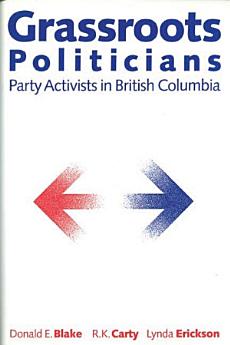Grassroots Politicians: Party Activists in British Columbia
About this ebook
The authors challenge the view that Social Credit is a homogeneously right-wing party and that the New Democrats have clearly opted for the political centre. They record how party profiles have changed over the years -- Social Credit activists becoming better educated, wealthier, and less diverse in terms of ties to national parties, while the NDP is now more middle-class, white collar, and professional. They explore such questions as why individuals stay in a weak party like the B.C. Liberals, how the New Democrats interpret successive Social Credit victories, and to what extent B.C. activists are similar to those in other provinces or in national parties. They offer an analysis of the leadership selection process in each party and a detailed account of the convention that chose Bill Vander Zalm. By examining the attitudes and ideologies of party activists, they are able to pinpoint their locations on the left/right spectrum, identify internal divisions, and assess the problems and opportunities they pose for party leaders and election strategies. As the British Columbia case illustrates, party militants carry distinctive subcultures which have a significant impact on the ongoing dynamics and immediate outcomes in competitive party systems. The study also shows that the partisan involvement of activists in national political parties is one of the major forces that links the otherwise separate provincial and federal political worlds inhabited by British Columbians.





